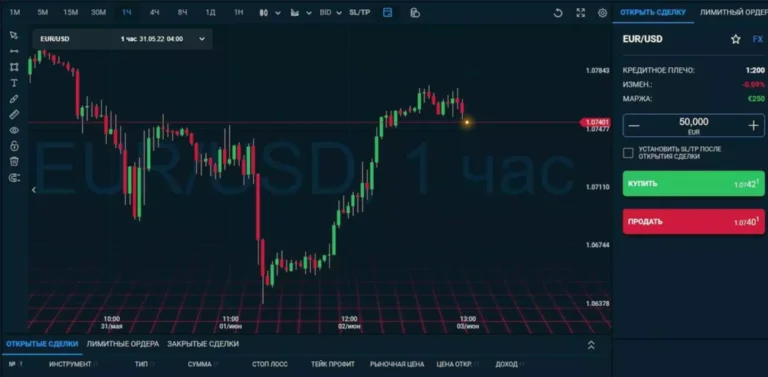Blockchain Wallet: What It Is, How It Works, Security
Content
By eliminating intermediaries and automating verification processes — done via smart contracts — blockchain Peer-to-peer enjoys reduced transaction costs, timely processing times and optimized data integrity. Combining public information with a system of checks-and-balances helps the blockchain maintain integrity and creates trust among users. Essentially, blockchains can be thought of as the scalability of trust via technology. Each block contains stored data, as well as its own unique alphanumeric code, called a hash.
bitcoin wallet, blockchain wallet, crypto wallet, what is a blockchain wallet
This interoperability will provide users with greater flexibility and whats a crypto wallet choice when it comes to managing their digital assets. With a blockchain wallet, you can easily send and receive digital currency. When you want to send cryptocurrency to someone else, you enter their wallet address and the amount you want to send.
How Does a Ledger Crypto Wallet Work?
Cryptocurrency exchanges have started offering custodial key storage for their users. Some new hardware wallets come with the ability to connect to your device through Bluetooth. Use these with caution because Bluetooth is a wireless https://www.xcritical.com/ signal that can be accessed by unwanted parties when it is turned on. So, you can have a noncustodial software hot wallet, a noncustodial hardware cold or hot wallet, or a custodial hardware cold wallet. These are the most common types, but you may also encounter other combinations.
- Receiving is even easier—the sender enters your address and goes through the same routine.
- You may obtain access to such products and services on the Crypto.com App.
- This way, organizations are entitled to a certain level of privacy when immutably sharing data independent of a third party.
- Typically offered on cryptocurrency exchanges, these wallets are known for their convenience and ease of usage, and are especially popular with newcomers, as well as experienced day traders.
- A mobile wallet is very similar to a desktop wallet as the wallet is downloaded directly to your device.
- Instead, it stores credentials called private keys that give you access to your assets on the blockchain.
What is the difference between a crypto exchange and a brokerage?
So you’ll be able to send payments to others and receive payments from them. While some of the top cryptocurrency exchanges are, indeed, based in the United States (i.e. KuCoin or Kraken), there are other very well-known industry leaders that are located all over the world. For example, Binance is based in Tokyo, Japan, while Bittrex is located in Liechtenstein.

Additionally, hardware wallets also provide you with a physical card to write down your secret recovery phrase. Exchange Bitcoin wallets, also known as custodial wallets, are usually offered by centralized crypto exchanges, and while they allow you to manage BTC, they don’t offer true ownership. That’s because instead of letting you manage your private keys yourself, the intermediary manages the private keys for you—only letting you access and manage the account rather than own it. Your Bitcoin wallet’s purpose is to generate and store private keys that allow you to access and manage different Bitcoin accounts. Each blockchain wallet varies in terms of numerous factors, such as the level of security, the type of cryptocurrencies it can hold, and the accessibility features. Some wallets may offer advanced security features, such as two-factor authentication.

When you use a blockchain wallet to manage your cryptocurrency, your digital assets are stored in the form of cryptographic keys. These keys are unique strings of characters that represent ownership of your digital currency. To access and manage your assets, you need to securely store and protect your private key, as it is the key to your wallet. With hot wallets, private keys are stored in the cloud for faster transfer. With cold wallets, private keys are stored in separate hardware that is not connected to the internet or the cloud, or they are stored on a paper document.
To set up a Bitcoin wallet on Ledger, you need to begin by downloading and installing Ledger Live, if you haven’t already. Once you have completed this step, open Ledger Live, connect your Ledger device to ‘My Ledger’, and make sure that your device is running the latest OS version. There have been many cases of malware disguised as wallets, so it is advisable to research carefully before deciding which one to use. VMW – Developed app for a multi-national company providing mass factory-to-factory shipment services. App is being used by 53 of the Fortune 500 companies such as John Deere, Coca-Cola, Nissan.
From hardware to software wallets, let’s dissect the intricacies of how crypto wallets work, and help you protect your assets effectively. Blockchain.com’s DeFi Wallet is one of the more secure wallets available, but it is still susceptible to malware, viruses, trojans, or programming errors. For the best security, cryptocurrency keys should be stored offline in a cold wallet. IThere are several optional security measures that are not required but can help secure wallets against outside attacks.

On the other hand, you can freely share your public key to receive funds into your blockchain wallet. The private key is a unique 256-bit binary number that you use to authenticate and authorize blockchain transactions. It is the password or key that grants you access to your digital assets and resources stored on the blockchain.
Without the seed phrase, you lose access to your accounts should you lock yourself out. Blockchain.com is a cryptocurrency exchange that provides a wallet for cryptocurrency users. The company calls it DeFi Wallet (it’s also called Blockchain Wallet by some).
This might sound like a recipe for disaster (after all, if you lose your keys, you lose your crypto), but non-custodial wallets actually offer two big advantages. By considering these factors and prioritizing what is important to you, you can select the right blockchain wallet that meets your needs and keeps your digital currency safe and secure. Mobile wallets offer convenience as you can carry your digital currency wherever you go, while desktop wallets may provide stronger security features. Remember, when it comes to crypto you’re only as safe as the crypto wallet protecting your private keys allows you to be. No matter how you’re interacting with that ecosystem – whether it’s exploring dApps and DeFi, or strictly trading crypto– it’s important to understand what happens each time you hit confirm. The article explains what is blockchain wallet, gives reasons as to why you might use a blockchain wallet and describes the different types of blockchain wallets.
Scalability issues arise due to limitations in block size, block processing times and resource-intensive consensus mechanisms. This is why novel approaches — such as layer 2 scaling solutions, sharding and alternative consensus algorithms — are being developed. As you can see, there are so many different kinds of Bitcoin wallets, from custodial and non-custodial, to hot and cold wallets, and more. Each has its advantages and disadvantages, but whichever you choose, the security of that crypto wallet is paramount. Bitcoin was the first ever cryptocurrency, and therefore the first network to support crypto wallets. The first wallet ever created belonged to Bitcoin’s founder, Satoshi Nakamoto.
Let’s understand how a blockchain wallet actually works and what are private and public keys in a blockchain wallet. In hot wallets, private keys are stored and encrypted on the app itself, which is kept online. Using a hot wallet can be risky since computer networks have hidden vulnerabilities that can be targeted by hackers or malware programmes to break into the system.
Crypto exchanges and custodial wallet providers usually also take further steps to ensure the safety of users’ tokens. For example, a portion of the funds is generally transferred to the company’s cold wallet, safe from online attackers. The implication here is that users must trust the service provider to securely store their tokens and implement strong security measures to prevent unauthorised access.
A block records some or all of the most recent transactions not yet validated by the network. Then, a new block is created for new transactions to be entered into and validated. For consumers looking to use blockchain wallets, there are several important aspects to consider for safe and effective usage.

